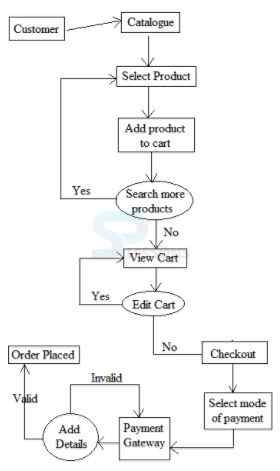 Introduction
Introduction
SBI Clerk JA 2019 - Main Examination, conducted in online Mode, has: a duration of 2 hours 40 minutes, a total of 190 questions, a maximum score of 200 marks, and, consists of 4 sections, namely - General/Financial Awareness, General English, Quantitative Aptitude and Reasoning & Computer Aptitude. The 4 sections are separately timed and the questions can be attempted in any order. There is a Negative marking in SBI Clerk JA Main exam and 0.25 marks are deducted for each wrong answer. Candidates must clear the cut-off in all the sectionsto qualify for final selection.
 Pattern
Pattern
| S.No | Sections | No. of Questions | Maximum marks | Time allocated |
|---|---|---|---|---|
| 1 | General/Financial Awareness | 50 | 50 | 35 minutes |
| 2 | General English | 40 | 40 | 35 minutes |
| 3 | Quantitative Aptitude | 50 | 50 | 45 minutes |
| 4 | Reasoning Ability & Computer Aptitude | 50 | 60 | 45 minutes |
| Total | 190 | 200 | 2 Hours 40 minutes |
 Syllabus
Syllabus
| S.No | Topics | |
|---|---|---|
| Reasoning Ability | Computer Aptitude | |
| 1 | Puzzles | History and Generation of Computers |
| 2 | Seating Arrangements | Introduction to Computer Organisation |
| 3 | Direction Sense | Computer Memory |
| 4 | Blood Relation | Computer Hardware and I/O Devices |
| 5 | Syllogism | Computer Software |
| 6 | Order and Ranking | Computer Languages |
| 7 | Coding-Decoding | Operating System |
| 8 | Machine Input-Output | Computer Network |
| 9 | Inequalities | Internet |
| 10 | Alpha-Numeric-Symbol Series | MS Office and Short cut keys |
| 11 | Data Sufficiency | Basics of DBMS |
| 12 | Logical Reasoning | Number System and Conversions |
| 13 | - | Computer and Network Security |
Penalty for Wrong Answers (Applicable to both – Preliminary and Main examination):
There will be negative marks for wrong answers in the Objective tests. 1/4th of mark assigned for question will be deducted for each wrong answer.
 Samples
Samples
1. Directions: ‘P * Q’ means ‘P is not greater than Q’.
‘P @ Q’ means ‘P is not greater than or equal to Q’.
‘P © Q’ means ‘P is not smaller than Q’.
‘P % Q’ means ‘P is not smaller than or greater than Q’.
‘P # Q’ means ‘P is neither smaller than nor equal to Q’.
Statements: H * W, W @ N, N % R
Conclusions:
I. R # W,
II. H * R
- A. Only I follow
B. Only II follows
C. Either I or II follows
D. Neither I nor II follow
E. Both I and II follow.
Directions (1-5): A person has decided to buy a product from an online shopping website. So, different steps are given in the form of a data flow diagram. Study the given data flow diagram and answer the questions that follow.
1. Which of the following condition will decrease the data flow diagram to minimum number of steps?
A) The person’s account is restricted to one item per order.
B) The person wants to have cash on delivery.
C) Shipping details of person is already saved in the account.
D) The person fills in the payment details correctly.
E) All of these
Answer: B
2. Which of the following step is logically missing in the given data flow diagram?
A) The cost of the product selected.
B) If more than one payment gateway is available then which to select.
C) The product is available or not.
D) The sections from which selection to be made.
E) These all are not important.
Answer: C
3. After which step, shipping details should be asked?
A) After finalizing the cart items.
B) After the checkout step.
C) Before view cart.
D) After selecting the mode of payment.
E) Cannot be determined
Answer: E
4. Which step will ensure that the product will be successfully ordered?
A) Product delivery is available at specific location.
B) Valid payment details are known.
C) Payment gateway is secured.
D) There is no other product in the cart before selecting the required product.
E) None of these.
Answer: B
5. Which of the following step is logically missing in the given data flow diagram?
A) Quantity of products to be added to cart.
B) If more than one payment gateway is available then which to select.
C) The catalogue is updated or not.
D) The options available for payment.
E) These all are not important.
Answer: D
6. Convert the given Decimal number into Binary form – 175
A. [latex]10001111_{2}[/latex]
B. [latex]11111010_{2}[/latex]
C. [latex]11101011_{2}[/latex]
D. [latex]10101111_{2}[/latex]
E. None of these
Answer: D
7. WWW stands for?
A. World Whole Web
B. Wide World Web
C. Web World Wide
D. World Wide Web
Answer: D
8. Which among following the first generation of computers had?
A. Vaccum Tubes and Magnetic Drum
B. Integrated Circuits
C. Magnetic Tape and Transistors
D. All of above
Answer: A






